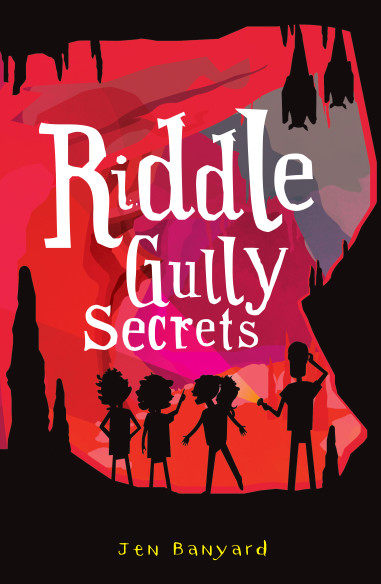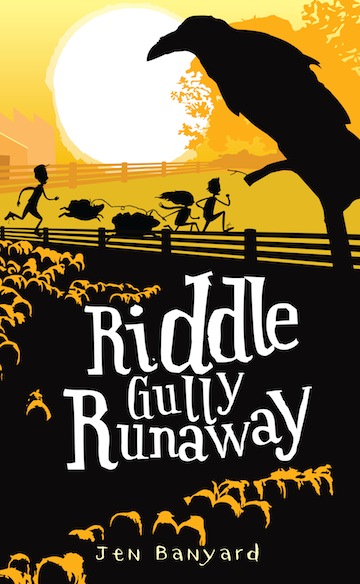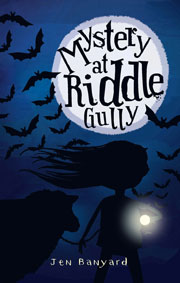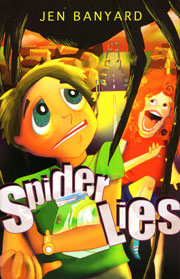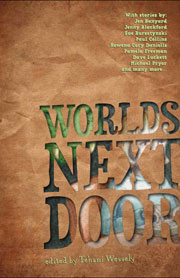Mystery at Riddle Gully – Teaching Notes
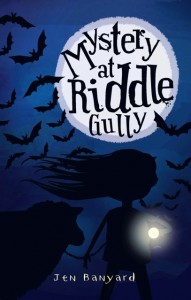
CONTENTS
- Print-friendly PDF download
- Summary
- Suggested activities and Australian Curriculum links
- Journalism word sleuth – worksheet provided
- Backwards crosswords – worksheet provided
- Riddle Gully crossword – worksheet provided
- What is the mystery at Riddle Gully? – worksheet provided
- Discussing family relationships
- Character profile – worksheet provided
- Discussing cover-ups
- Plan for a mystery or suspense story – worksheet provided
- Simile or metaphor? – worksheet provided
- Slapstick cartoon – worksheet provided
- Play script
- Plan for a vampire film poster – worksheet provided
- Map of Riddle Gully
- News Gazette
- Development vs environment debate – worksheet provided
- Consequences flow chart – worksheet provided
- Notes and guidelines for further study
Print-friendly PDF download
| Download Mystery at Riddle Gully PDF teaching notes |
Summary
Mystery at Riddle Gully is not just another mystery story. It is a literary novel full of humour, figurative language, rich characterisations, interweaving sub-plots and rich themes. As such, the novel provides an engaging context for teaching and learning about English Language, Literature and Literacy. It can also be used as a springboard for discussion about family relationships, endangered animals, journalism, vampires, local government, the understanding that people are not always as they might at first appear and the notion that people’s perceptions can be swayed by emotional factors.
Suggested activities and Australian Curriculum links
Activities |
Australian Curriculum |
|---|---|
Journalism word sleuthComplete the word sleuth to find vocabulary about journalism used in the novel. Consult dictionaries and conduct online searches to find the meaning of the words. Use a thesaurus to discover similar words and phrases. |
English: Language: Expressing and developing ideas, VocabularyThe meaning of words including everyday and specialist meanings and how words take their meaning from the context of the text. |
Backwards crosswordComplete the backwards crossword before and after reading the novel and discuss how words take their meaning from the context of the text. Write clues for the across words in Crossword A. Work with a partner who has written clues for the down words in Crossword B to complete the puzzle. |
|
Riddle Gully crosswordComplete this crossword after reading Mystery at Riddle Gully. |
|
What is the mystery at Riddle Gully?Record ideas before, during and after reading and justify your thinking with evidence from the novel. Think of a time in your life when you thought someone was up to no good. Write the title you might use in a mystery story about it. |
English: Literature: Responding to literature, Personal responses to the ideas, characters and viewpoints in textsAn individual response to the ideas, characters and viewpoints in literary texts, including relating texts to their own experiences |
Discussing family relationshipsIn the novel Will reflected that Pollo didn’t have enough parents and he had too many. Discuss ways in which the family relationships of the two main characters influence events in the novel (eg Pollo’s relationship with her late mother and Will’s relationship with his father and his step-father). Reflect on a time when your relationship with a parent impacted on your actions. |
|
Character profileRecord key words and phrases to describe a character from Mystery at Riddle Gully. Underline the features that make the character amusing. Share your character profile with others and discuss ways in which the author has created humorous characters in the novel. |
|
Discussing cover-ups‘Oh what a wicked web we weave when first we practise to deceive.’ William Shakespeare Reflect on what happened when Will tried to cover up having graffitied the school. Have you ever done something bad and tried to hide it? How did you feel? Did things get better or worse? Maybe you still feel a bit guilty about it. If it happened again would you confess or try to cover it up? |
|
Plan for a mystery or suspense storyDiscuss features of a mystery or suspense story. Record key words and phrases in a narrative plan. Write the story with reference to the hints for writing a mystery or suspense story. |
English: Literature: Creating literature, Creating literary textsCreating their own literary texts based on the ideas, features and structures of texts experienced |
Simile or metaphor?In the novel the author uses figurative language to create images. Similes use the words ‘like’ or ‘as’ to compare one thing with another (eg ‘Well, don’t stand there like a letter box!’) while metaphors imply that one thing is actually another (eg ‘The nasty thought crawled up her neck and under her beanie.’) Read examples of figurative language from the novel and indicate whether they are similes or metaphors. |
English: Literature: Examining literature, Language devices in literary texts including figurative languageThe language devices that authors use and how these create certain meanings and effects in literary texts, especially devices in poetry |
Slapstick cartoonMystery at Riddle Gully contains elements of slapstick humour in which Will endures a number of disastrous experiences (eg chapter 3 – making his mother’s birthday breakfast, chapter 9 – burning his mother’s dress and wig in the back yard, chapter 13 – trying to make a hole in the fence). Create a cartoon of a slapstick event from the story. |
English: Literature: Creating literature, Experimentation and adaptationCreating a variety of texts, including multimodal texts, adapting ideas and devices from literary texts |
Play scriptSelect a scene with dialogue from the novel (eg the meeting in the Town Hall; when Pollo and Will accost Viktor in the clearing; Will’s confession) and adapt it into a play script to perform as Readers’ Theatre. |
|
Vampire film posterRead Chapter 26 and create a poster for a vampire film featuring Viktor Von Albericht and Pollo di Nozi. Include some of the weapons in Pollo’s ‘anti vampire arsenal’. Hold a class exhibition in a space decorated with Southern Bent-wing Bats and play Bach's Toccata and Fugue in D Minorto add atmosphere when the exhibition is open to visitors. |
English: Literacy: Creating texts, Creating textCreating different types of spoken, written and multimodal texts using knowledge of text structures and language features. Use of softwareUsing a range of software applications to construct and edit print and multimodal texts. |
Map of Riddle GullyDraw a map of Riddle Gully featuring places of importance in the novel (eg cemetery, meadow, forest, track behind Pollo and Will’s houses, initially proposed Diamond Jack Experience Tourist Centre, the Diamond Jack Trail, ranger’s hut, old railway bridge, clearing and bat cave). |
|
News GazetteCreate the front page of a class ‘news’ gazette. Include a banner (or name), date, cost, circulation, headline heirarchies, pictures and captions. (There are free newspaper templates available online at <newspapertemplates.net>; MS Word also has its own version.) |
|
Development vs environment debatePlan and present affirmative and negative arguments on the topic:‘That developing the Diamond Jack Experience Tourist Centre is more important than protecting the Southern Bent-wing Bat.’ |
English: Literacy: Interacting with others, Oral presentationsThe formal oral presentations that students engage in including presenting recounts and information, and presenting and arguing a point of view Science: Science Understanding, Biological SciencesThe growth and survival of living things are affected by the physical conditions of their environment |
Consequences flow chartIn the book’s acknowledgements, the author uses the quote: ‘In nature there are neither rewards nor punishments; there are consequences.’ Read Chapter 30 of Mystery at Riddle Gully and draw a ‘consequences flow chart’ that depicts or speculates on how the loss in nature of something as seemingly insignificant as a bat may ultimately have wide implications. Present and argue your point of view. |
Student worksheets
The PDF version of the teaching notes contains these full printable worksheets for classroom use:
- Journalism word sleuth and answers
- Backwards crossword A and B
- Riddle Gully crossword and answers
- What is the mystery at Riddle Gully?
- Character profile
- Plan for a mystery or suspense story
- Simile or metaphor?
- Slapstick cartoon
- Plan for a vampire film poster
- Bat template
- Plan for a debate
Notes and guidelines for further study
-
As a starting point for further research on all sorts of things, but especially nature, the Australian Museum Online is terrific. Go to http://www.australianmuseum.net.au and click the ‘Animals’ tab.
-
The website of the Australian Government’s Department of Sustainability, Environment, Water, Population and Communities (DSEWPC) contains the ‘Environment Protection and Biodiversity Conservation Act 1999’ (the EPBC Act) lists of Threatened Fauna and Threatened Flora. At the time of going to print, there are 444 species of threatened or extinct Australian fauna and 1341 species of flora listed. Extinctions are still occurring. The tiny insect eating bat, the Christmas Island Pipistrelle, for instance, is within a hair’s breadth of extinction and may well have passed from the planet by the time this is read. As one leading bat researcher said: ‘I reckon it’s a goner.’
A visit to the DSEWPC website will throw light on the many different threatened species, the different levels of endangerment, the criteria by which categorisations are made and proposed action plans. Threatened animal species are listed at http://www.environment.gov.au/cgi-bin/sprat/public/publicthreatenedlist.pl.
-
Sue Churchill’s book, ‘Australian Bats’ (Jacana Books/Allen & Unwin 2008) is a particularly helpful reference for the study of Australian bats. Please note that this second edition uses the scientific name, not formally adopted at present, of Miniopterus orianae bassanii, not schreibersii for the Southern Bent-wing Bat. In keeping with the EPBC Act list, the author has used the term schreibersii and the hyphenated ‘Bent-wing’ throughout the book.
-
Did you know that 2011/12 is the United Nations ‘Year of the Bat'? For more information go to http://www.yearofthebat.org.
The author expresses her deep gratitude to curriculum development consultant, Ms Gail Spiers,
who devised these teaching notes.

